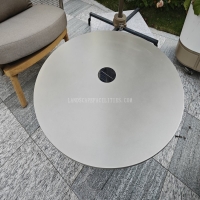Welcome to the website for landscape facilities products and knowledge.
What are the best ways to ensure that landscape tables are inclusive for users of all ages and abilities?
Creating inclusive landscape tables requires thoughtful design to accommodate users of all ages and abilities. Here are the best practices to ensure accessibility and usability:
1. Adopt Universal Design Principles: Design tables with adjustable heights, ample knee clearance, and sturdy surfaces to support wheelchairs, walkers, and varying mobility needs.
2. Choose Comfortable and Durable Materials: Opt for weather-resistant, non-slip surfaces and ergonomic seating to ensure safety and comfort for children, seniors, and individuals with disabilities.
3. Ensure ADA Compliance: Follow ADA guidelines for clear pathways, appropriate table heights (28-34 inches), and accessible seating arrangements to promote inclusivity.
4. Incorporate Multi-Generational Features: Include benches with backrests, armrests, and varied seating options to cater to different physical needs and preferences.
5. Provide Clear Signage and Wayfinding: Use high-contrast colors, braille labels, and intuitive layouts to help users with visual or cognitive impairments navigate the space easily.
By prioritizing inclusivity in landscape table design, public spaces can become welcoming environments for everyone, fostering social interaction and community engagement.
Related search:

Recommendation
Outdoor stainless steel table with solar-powered ambient lighting feature - excellent design.